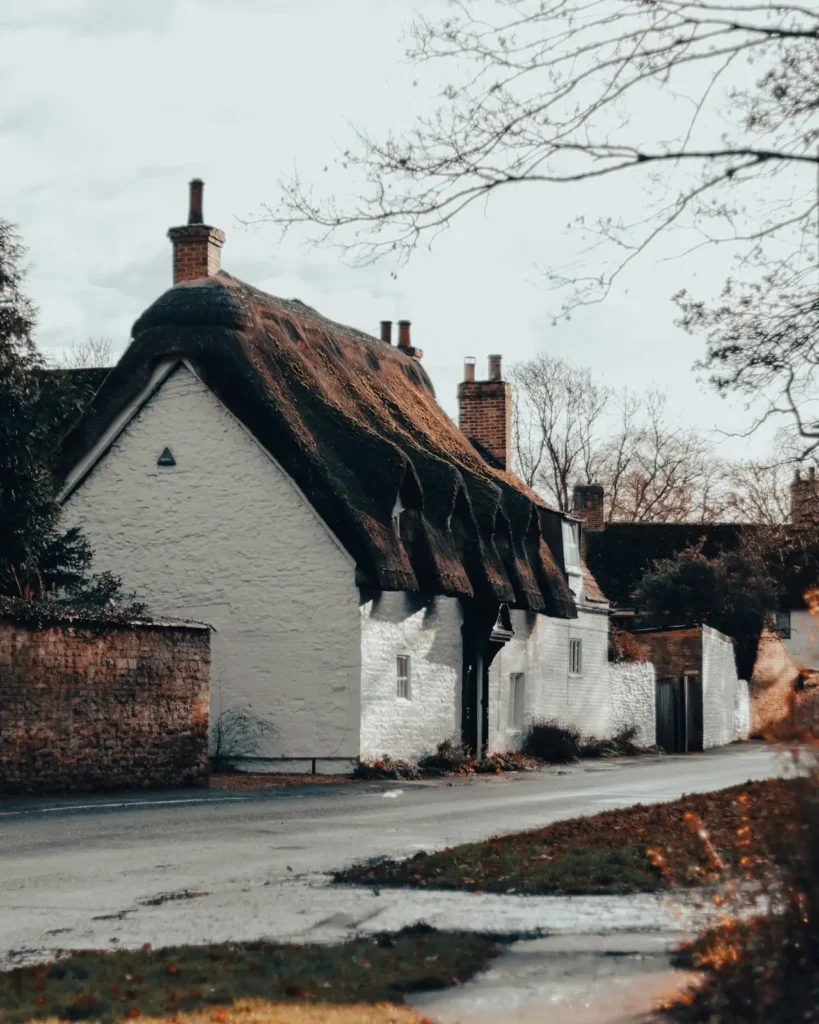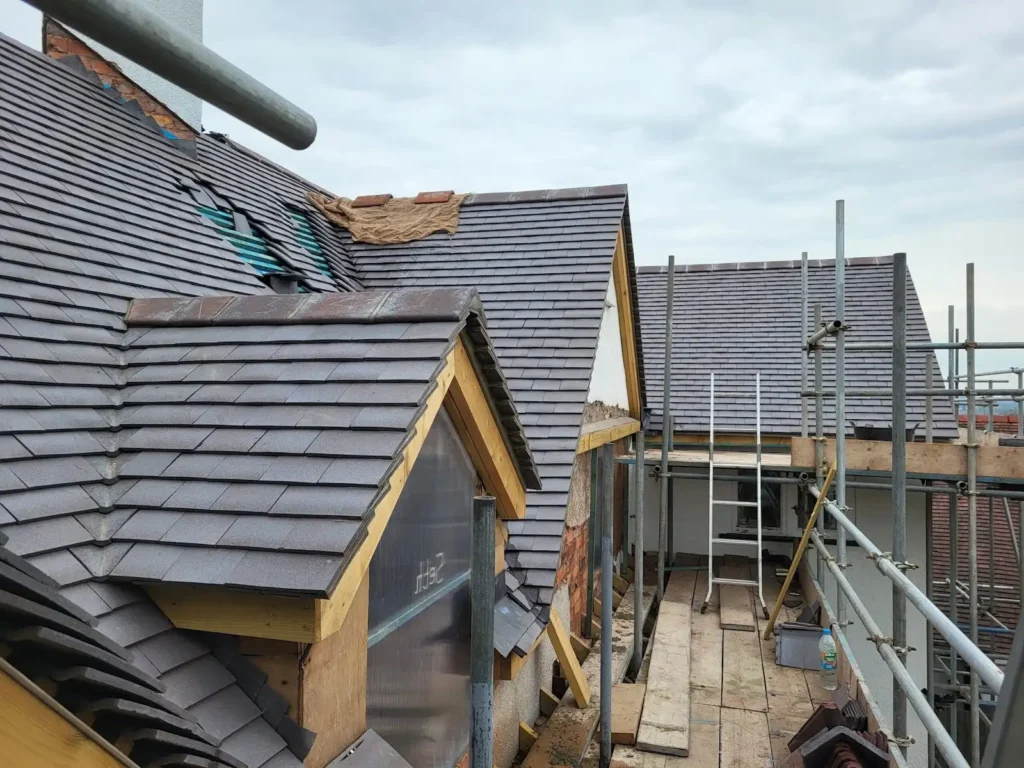Heritage buildings are a vital part of our architectural history, requiring careful restoration and maintenance to preserve their character and integrity for future generations. Roofing plays a crucial role in maintaining these historic structures, ensuring both aesthetic continuity and long-term durability.
Heritage roofing projects demand specialist knowledge, traditional craftsmanship, and a commitment to using materials that align with the building’s original construction.
This guide explores key considerations, materials, regulations, and modern techniques essential for successful heritage roofing projects.
Understanding Heritage Roofing
Heritage roofing involves restoring or replacing roof structures on historic buildings using traditional materials and craftsmanship. These projects require an in-depth understanding of historical character, local conservation regulations, and modern techniques that respect the original design while enhancing durability. Failure to follow best practices can lead to structural issues, aesthetic inconsistencies, and potential violations of heritage conservation laws.
Heritage roofing must adhere to strict guidelines, particularly for listed buildings and those located in conservation areas. Historic England provides extensive guidance on maintaining listed structures and ensuring conservation efforts meet regulatory standards.
Key Considerations for Heritage Roofing Projects
1. Selecting the Right Materials
Choosing appropriate roofing materials is critical for preserving the aesthetics and structural integrity of heritage buildings. Traditional materials vary depending on the building’s era, location, and architectural style. Some of the most common options include:
- Clay Tiles – A staple for historic buildings, clay tiles offer excellent durability, weather resistance, and an authentic appearance. They age beautifully, adding to the structure’s character over time.
- Reclaimed Slate and Tiles – Using reclaimed roofing materials helps maintain historical accuracy, ensuring a seamless match with existing roofs while promoting sustainability. Salvaged slate and tiles often have a distinctive patina that newer materials lack.
- Lead Roofing – Lead has been used for centuries in heritage roofing due to its exceptional longevity and adaptability. While expensive, properly installed lead roofing can last over 100 years.
- Thatched Roofing – Found in traditional cottages and rural heritage buildings, thatch provides a distinctive look while offering excellent insulation properties. However, it requires frequent maintenance and specialist expertise.
Related Reading: What is Traditional Roofing? Methods, Materials & More

2. Compliance with Listed Building Regulations and Permissions
If a building is listed, any alterations—including roofing repairs or replacements—must comply with strict regulations. Before starting a project, it’s essential to obtain planning permission from the local authority and consult with a local conservation officer to ensure all work aligns with heritage preservation laws. Ignoring these requirements can result in fines and legal issues.
Listed buildings fall under different categories:
- Grade I – Buildings of exceptional national importance
- Grade II* – Particularly significant structures with historical or architectural merit
- Grade II – Buildings of special interest that must be preserved
Understanding these classifications is essential when planning roofing projects. Government guidelines on listed buildings outline the necessary permissions and procedures.
3. Structural Integrity and Roof Restoration
Before any restoration work begins, a thorough assessment of the roof’s condition is necessary. Many heritage buildings have fragile timber frames and aged roofing materials that require careful reinforcement. Skipping this step can lead to costly structural failures and further deterioration.
Key steps in assessing structural integrity include:
- Surveying timber supports for rot, insect damage, or warping
- Checking for roof sagging or uneven weight distribution
- Evaluating drainage and ventilation systems
Hiring experienced craftsmen who specialise in heritage roofing ensures that repairs maintain historical accuracy while improving the roof’s durability.
Modern Techniques for Heritage Roofing
While traditional materials and craftsmanship remain essential, modern techniques can enhance a heritage roof’s durability, energy efficiency, and resilience to environmental factors. Advances in roofing technology now allow for better preservation without compromising authenticity.
Some innovative solutions include:
- Lime Mortar Repairs – A breathable alternative to cement-based mortars that prevents moisture damage and allows buildings to flex naturally.
- Non-Intrusive Insulation – New insulation materials can be discreetly installed to improve thermal efficiency while preserving the original roof design.
- Advanced Timber Treatments – Protecting ancient wooden structures from rot, damp, and pests is crucial for long-term stability.
- Hidden Guttering and Drainage Systems – Improving water drainage while maintaining the roof’s historic look.
Read More: 9 Differences Between Traditional & Modern Roofing
Choosing the Right Roofing Contractors
Heritage roofing requires a level of expertise beyond standard roofing services. It’s essential to select contractors who specialize in historic building restoration and have a proven track record of working with listed structures.
When choosing a contractor, consider:
- Experience with similar heritage projects
- Knowledge of traditional materials and techniques
- Familiarity with listed building regulations
- A portfolio showcasing previous work on historic structures
A skilled heritage roofing contractor will provide expert advice and ensure compliance with conservation laws.

Regular Maintenance and Roofing Services
Preserving a heritage roof requires ongoing maintenance to prevent minor issues from becoming major structural problems. Regular inspections and routine care help extend the lifespan of heritage roofs while reducing costly repairs.
Essential maintenance tasks include:
- Checking for cracked, missing, or weather-damaged tiles
- Clearing gutters, downpipes, and drainage systems to prevent water buildup
- Ensuring proper ventilation to reduce condensation and damp issues
- Applying protective treatments to timber structures
Engaging professional heritage roofing services ensures that maintenance is carried out using the correct materials and techniques.
Get a Roofing Quote for Your Heritage Project
If you’re planning a heritage roof restoration, obtaining a detailed roofing quote from a specialist contractor is the first step. Working with experts who understand Grade I and Grade II listed building regulations ensures compliance with conservation requirements while delivering high-quality restoration work.
Many heritage roofing specialists offer site surveys to assess the roof’s condition, recommend appropriate materials, and provide a cost estimate. Always get expert advice.
Final Thoughts
Heritage roofing is a delicate balance between preserving historical authenticity and enhancing durability. By selecting the right materials, adhering to regulations, using modern conservation techniques, and engaging experienced specialists, you can ensure your heritage building’s roof remains structurally sound and true to its historical significance. Proper maintenance and expert guidance will help your heritage roof withstand the test of time, maintaining its beauty for future generations.
At C Kearney Roofing, we offer expert advice and top-quality roofing solutions and services, whether you prefer the classic appeal of traditional materials or the cutting-edge benefits of modern alternatives.
Contact us today to discuss your roofing needs and find the perfect slate solution for your home or business.
Roofing For Heritage Buildings FAQs
What challenges arise when restoring roofs on heritage structures?
Restoring roofs on heritage structures requires careful planning to ensure historical accuracy and compliance with conservation laws. Challenges include sourcing authentic materials, obtaining permissions, and maintaining the existing structure while incorporating modern reinforcements for durability.
Can modern materials be used in heritage roofing projects?
Yes, modern materials can be used in heritage roofing projects, but they must align with conservation guidelines. Some modern materials, such as non-intrusive insulation and advanced timber treatments, can enhance longevity and performance without compromising the building’s historical integrity.
How often should roofing work be carried out on heritage buildings?
Regular inspections should be conducted at least once a year, with roofing work carried out as needed to prevent damage. Timely repairs and preventative maintenance help preserve the structure and reduce costly restoration projects in the future.